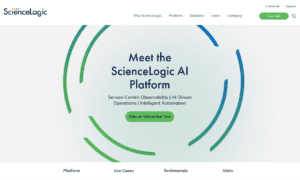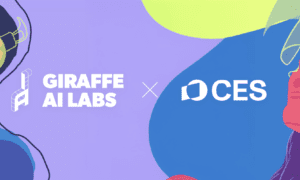Over the past few years, online learning has evolved dramatically, reshaping education systems in ways never imagined. Maryland, with its tech-forward mindset, is embracing these advancements and is at the forefront of incorporating digital learning into educational institutions. The quick adoption of online learning has opened up new opportunities, particularly as innovations emerge to meet the changing needs of learners, educators, and institutions. As we look toward the future, understanding the trends and innovations in Maryland’s online education space reveals how digital learning is set to redefine education in the region.
The Growth of Online Learning in Maryland
Maryland’s education system, both at the K-12 and higher education levels, has witnessed substantial growth in online learning. Many institutions in Maryland have now integrated virtual learning platforms and courses into their curriculum. The onset of the COVID-19 pandemic fast-tracked this shift, making online learning a necessity rather than an option. Although in-person learning has largely resumed, the demand for flexible, digital education options remains high.
The state of Maryland has been proactive in supporting online education. From implementing infrastructure upgrades in schools to investing in digital tools, Maryland is committed to maintaining this trend. The Maryland State Department of Education (MSDE) has also worked closely with schools to develop a robust framework for online learning. This approach is setting the stage for future growth, as the state continues to prioritize accessibility, inclusivity, and quality in online education.
Key Trends Shaping the Future of Online Learning
Several significant trends are shaping the future of online learning in Maryland. These trends reflect broader shifts in technology and society and are likely to have a lasting impact on the educational landscape.
Personalized Learning Pathways
Personalized learning allows educators to tailor the learning experience based on the individual needs and preferences of each student. In Maryland, schools are increasingly using data analytics and adaptive learning technologies to offer more customized education plans. Adaptive learning tools can identify areas where students struggle, allowing instructors to provide targeted support. These tools can also offer additional resources for students who excel in certain areas, creating an engaging learning environment that meets students at their level.
Moreover, online platforms can integrate tools like artificial intelligence (AI) to adjust content according to each student’s progress. For Maryland students, this means a more relevant and engaging learning experience that can foster better educational outcomes.
Blended Learning Models
Blended learning, which combines online and face-to-face instruction, is becoming a popular model in Maryland. This hybrid approach allows students to benefit from the flexibility of online education while still experiencing the traditional aspects of in-person learning. Schools and universities in Maryland have adopted blended learning to provide students with a balance between digital and in-classroom interaction.
For example, the University System of Maryland (USM) has integrated hybrid courses into its programs. These courses allow students to complete assignments and attend lectures online while also engaging in in-person discussions and projects. As technology continues to improve, blended learning models are expected to become more dynamic and interactive, providing a well-rounded educational experience.
Increased Focus on Digital Literacy and Skill Development
Digital literacy has become a critical skill for success in today’s job market. Recognizing this, Maryland’s online learning programs are placing a greater emphasis on teaching digital skills alongside traditional subjects. From coding and data analysis to digital communication, students are learning skills that are valuable in a technology-driven world. Additionally, online learning platforms provide students with the tools to navigate the digital landscape safely and responsibly.
Programs like Maryland’s Digital Literacy Framework focus on equipping students with these skills early on. In the future, online courses in Maryland are expected to expand their focus on digital skill development, preparing students for future careers and making them proficient in navigating digital environments.
Innovations Propelling Online Learning Forward
Technological advancements have introduced exciting new tools and methods in online education. Maryland’s online learning landscape is benefitting from these innovations, which promise to make education more interactive, engaging, and effective.
Virtual Reality (VR) and Augmented Reality (AR)
VR and AR technologies are revolutionizing online learning, providing immersive experiences that were previously impossible in traditional classrooms. In Maryland, schools are beginning to explore VR and AR as tools to enhance student engagement and comprehension. For example, a biology class might use VR to explore the human body in 3D, allowing students to experience the subject in a hands-on way, even though they are learning remotely.
These technologies offer a new level of interactivity, making complex subjects easier to understand. As VR and AR become more accessible and affordable, they will likely play a bigger role in online learning programs across Maryland, particularly in STEM (Science, Technology, Engineering, and Mathematics) subjects.
Artificial Intelligence (AI) in Education
AI is playing an increasingly important role in online education. In Maryland, AI is being used to develop smarter learning platforms that can adapt to the needs of students. AI-powered chatbots, for example, can provide students with 24/7 support, answering questions, and assisting with course material. AI can also help instructors by automating routine tasks like grading and administrative work, allowing teachers to focus more on personalized instruction.
AI-driven systems are expected to become more sophisticated over time, offering even more support to both students and teachers. For Maryland’s educational institutions, this means a more efficient learning environment that can cater to diverse learning styles and needs.
Gamification and Interactive Learning
Gamification involves incorporating game-like elements into the learning process, such as points, levels, and rewards. This approach has been shown to improve student motivation and engagement, particularly among younger learners. In Maryland, online learning programs are beginning to implement gamified elements to create a more engaging educational experience.
Educational platforms such as Khan Academy and Duolingo use gamification to encourage learners to achieve certain goals and milestones. Maryland’s schools and colleges are likely to integrate more gamified tools in the future, making learning a fun and interactive experience. By tapping into students’ natural curiosity and competitive spirit, gamification can make complex concepts more accessible and enjoyable.
The Role of Policy and Government Support in Maryland’s Online Learning Future
Government support and policy play a crucial role in shaping the future of online learning. In Maryland, state policies are evolving to support the growing demand for digital education. The Maryland State Department of Education has developed initiatives that support schools in implementing online and hybrid learning models effectively.
Moreover, funding is being allocated for the development of digital infrastructure, particularly in rural areas. With increased funding, schools can invest in high-speed internet, digital devices, and training for teachers. This support is essential for ensuring equitable access to online education across the state.
Maryland’s commitment to policy reform and investment in online learning initiatives is expected to further boost the quality and accessibility of digital education. As the demand for online learning continues to grow, state policies will play an essential role in supporting this transformation.
Challenges and Future Outlook
While Maryland’s online learning landscape is brimming with possibilities, it also faces certain challenges. One of the biggest challenges is the digital divide, which can prevent students in low-income areas from accessing online education. Despite ongoing efforts to provide resources, some students may still struggle with connectivity and device issues.
Additionally, maintaining student engagement in an online environment can be challenging. Without face-to-face interaction, some students may find it harder to stay motivated. However, innovations in virtual interaction tools, such as VR and gamification, are helping to address this issue by making online learning more interactive and enjoyable.
Looking forward, Maryland is well-positioned to lead in online learning innovation. With continued investments in technology and digital infrastructure, along with supportive state policies, Maryland’s educational institutions are likely to offer even more advanced and accessible online learning options.
Conclusion
The future of online learning in Maryland is promising, with trends like personalized learning pathways, blended learning models, and digital literacy development setting the stage for a new era in education. Innovations such as VR, AI, and gamification are making online learning more engaging and effective, while government support ensures that these advancements are accessible to all students. As Maryland continues to embrace digital transformation in education, the state is likely to become a model for effective, inclusive online learning.
Ultimately, Maryland’s approach to online learning reflects a commitment to quality education, preparing students for a future where digital skills and flexibility are essential. The ongoing trends and innovations in Maryland’s online education system promise to make learning more dynamic, preparing students for success in a rapidly changing world.



































